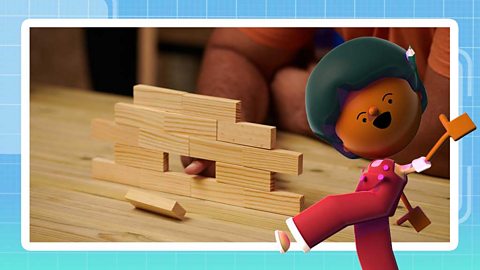Joining methods
Materials can be joined together in different ways. For example, you could use glue, tape, staples, screws or paper fasteners.
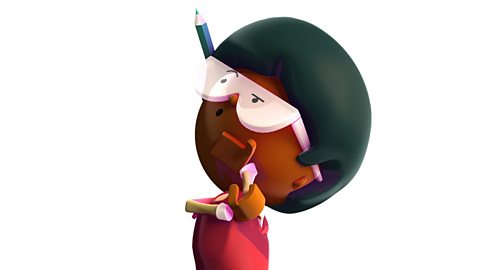
Some of these ways are stronger than others and some are used because of the properties they have.
Glue and nails create a very strong join, while paper fasteners can create a joint that allows movement.
You also need to think about the materials you want to join and the kind of structure you want to create.
Let’s take a look at some different types of joints.

Flange joints
A flange joint can be used to connect tubes or pipes.
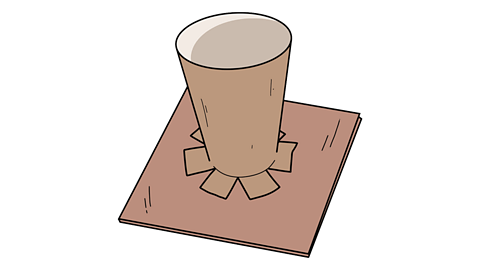
Make your own
To create a flange joint using a cardboard tube:
- Use scissors to make small cuts from the bottom of the roll towards the middle of the roll.
- Make sure each cut is the same length and space out the cuts evenly around the roll.
- Fold the cut sections to create a stable base. Stable means it won’t be knocked down easily.
- Use glue or tape to fix the tube down.
Slots
A slot is a way to connect flat materials together to make a free standing structure.
'Free standing' means an object will stand up on its own without being supported.


Make your own
To create your own slot structure from two pieces of paper or card:
- Take two pieces of card and make a cut in both pieces to halfway.
- Hold one piece of card in each hand.
- Line up the slots you have cut.
- Move the card so it makes a cross shape and slot both pieces of card together.
L brace
An L brace is a way to connect materials together to make an L shape.
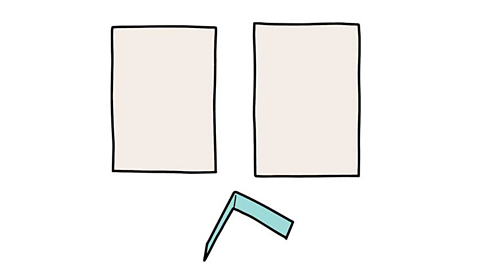
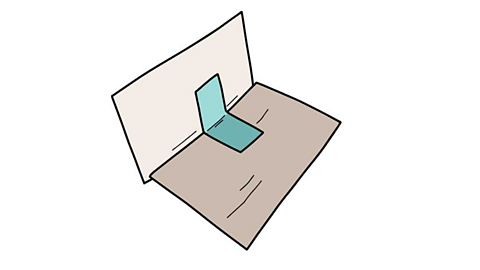
Make your own
To make an L brace from two pieces of paper or card:
- Lay one piece flat as a base.
- Stand the second piece of card up to make an L shape.
- Fold a small rectangular piece of card in half.
- Join the L shape structure together by gluing or taping the folded rectangular piece in place.
Tabs
Tabs can be used to make a free-standing wall. They can also be used to connect corners and hold them in place.
Tabs are often used in the corners of packaging boxes. This helps to make them strong to protect the contents.
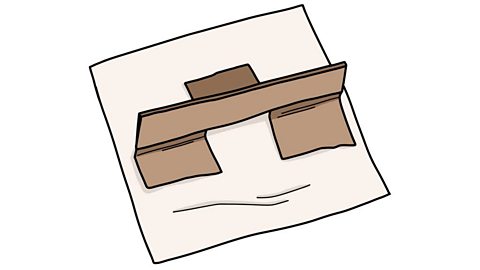
Make your own
To make your own tabs using a piece of card:
- Make even small cuts from the bottom of the card towards the middle of the card.
- Fold the cut sections in opposite directions to create a stable base.
- Glue or tape the tabs down.
Butt joints
A butt joint is a simple way to join two pieces of wood together.
A butt joint is created by fixing the end of one piece of wood to another piece of wood.
They could be joined together with glue, nails or screws.

Activity: Find the joint
Let's see what you can remember. Do you know a flange joint from a tab joint?
Key words
| Butt joint | When one end of a piece of wood is placed against another and attached together. |
| Flange joint | When a folded edge of tabs is used to join pipes to other objects. |
| L brace joint | When an extra piece of material is used to join two pieces of material in an L shape. |
| Slot joint | When a slot is cut in two materials and then used to join them together in a 3D structure. |
| Tab joint | When a folded part of material is used to join pieces of material together. |
Quiz
Test your knowledge and find out what you know about joining materials together.
More on Structures
Find out more by working through a topic
- count1 of 3

- count2 of 3
